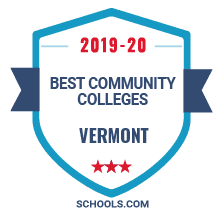CTE in Vermont
In an effort to improve student achievement and address skilled labor shortfalls in the workforce across the U.S., career technical education (CTE) programs are gaining popularity in Vermont and around the country. These programs aim to provide students with a solid academic background as well as a range of career-relevant skills that can add value to a job search.
The programs seem to be working, as well. No less than 85 percent of students who focus on CTE training in Vermont high schools continue into college, advanced training programs, employment or military service in six months or less after graduating. What's more, 88 percent of CTE college graduates go on to find jobs, apprenticeships or other positions after finishing their programs.
Here's a list of resources to check if you're looking to learn more about the opportunities provided by CTE in Vermont:
- The career technical education page maintained by the Vermont Agency of Education can give you some insight into the goals, programs and strategic vision of CTE in Vermont.
- Vermont CTE is a student resource that provides links to regional career and technical education schools throughout the state and answers some frequently asked questions.
- Find out about the type of career and technical education programs available to Vermont students on the Burlington Technical Center programs page.
At the college level, CTE training in Vermont is available through two principal public institutions: Vermont Technical College and the Community College of Vermont. Both institutions offer expansive lists of career and technical education programs, so be sure to visit each school's website or talk with an advisor to get a full picture of the options available to you.
Transferring Credits in Vermont
Nearly 50 percent of graduates from the Community College of Vermont choose to move their credits forward into university bachelor's programs once they've finished the requirements for their associate degree. Here are a couple of the most common ways that students can prepare for a smooth transfer process:
- Other members of the Vermont State Colleges system — Northern Vermont University, Castleton University and Vermont Technical College — offer a direct admissions program that includes nearly 50 bachelor's programs. Courses for Direct Admissions students count toward both a CCV associate degree and the intended bachelor's degree at their destination school.
- Students looking to transfer out of the VSC system can make use of special transfer agreements that CCV maintains with individual public and private institutions. Over a dozen colleges and universities have transfer agreements with CCV, although they may be restricted to particular subject areas or degree tracks.
Even if your target school isn't included in any of the above agreements, it's still possible to make a conventional transfer. Remember to meet regularly with an advisor to make sure you're taking the right courses. When you're ready, explore the top universities in Vermont for potential transfer destinations, and take a look at our college transfer guide for more insight into transfer agreements and the transfer process.
Resources for Community College Students in Vermont
- The Vermont Higher Education Council (VHEC), as the umbrella organization for all public, proprietary and independent four- and two-year schools in Vermont, provides statewide higher education data and information about the state's certification process.
- The Vermont Student Assistance Corporation has provided over $700 million in grants and scholarships since its founding in 1965 and shares information on a range of financial aid options.
- Vermont JobLink, a service of the Vermont Department of Labor, can help you search for job postings or find supplemental training once you've finished your community college program.
Methodology
Using the National Center for Education Statistics' Integrated Postsecondary Education Data System (IPEDS), we generated a list of colleges and universities that met the following criteria:
- Level of institution is either "At least 2 but less than 4 years" or " Less than 2 years (below associate)"
- Data is reported for all 14 ranking variables listed in the Methodology section
We ranked the resulting community colleges member schools on multiple factors related to educational opportunity, student performance and student services. Each school was scored on a 10-point scale, using the following data points:
- The published in-district tuition and fees, National Center for Education Statistics, 2018
- The published in-state tuition and fees, National Center for Education Statistics, 2018
- The in-district per credit hour charge for part-time undergraduates, National Center for Education Statistics, 2018
- The in-state per credit hour charge for part-time undergraduates, National Center for Education Statistics, 2018
- Percentage of students receiving financial aid, National Center for Education Statistics, 2016
- Percent of students that transferred to a 4-year institution and completed within 8 years, College Scorecard, 2017
- The graduation rate in 150% time, National Center for Education Statistics, 2017
- Full-time student retention rate, National Center for Education Statistics, Fall 2017
- Student-to-faculty ratio, National Center for Education Statistics, Fall 2017
- Percentage of students enrolled in distance education, National Center for Education Statistics, 2017
- Flexibility, based on the following data points from the National Center for Education Statistics, 2018
- Whether the school offers credit for life experiences
- Whether the school offers programs of study that can be completed entirely in the evenings and on weekends
- Whether the school offers on-campus day care for students' children
- Whether the school offers any kind of alternative tuition plan. These may include, but aren't limited to, payment plans or guaranteed rates.
